
I’m sure Martha Treadwell of Healdton didn’t realize in 1971, but when she filed to run for Carter County commissioner that year, her name would be forever recorded in the Carter County history books as the first and still only female to run for the office of Carter County Commissioner..
In October 1971 about 7 people filed for the Carter County Commissioners post for District 2. There was Carl Pevehouse, a Ratliff City rancher. (The post came up for election when incumbent Joyce Taliaferro died in office in August of 1971.) Others seeking the post were Leon W. Loftis, an Ardmore rancher; Jim Dollar, a Healdton construction worker; and Rex Puckett, an oil field worker. Also running was Donald Duke, who created a special interest in the election since he had the same name as State Representative Don Duke. But also a candidate for the county commissioners office was Healdton, Oklahoma resident Martha Treadwell. Mrs. Treadwell would put her name in history as the first ever female to run for the Carter County commissioners office. In the end, E.C. “Chub” Davis would edge out all those seeking the office, including Mrs. Treadwell. -The Daily Ardmoreite
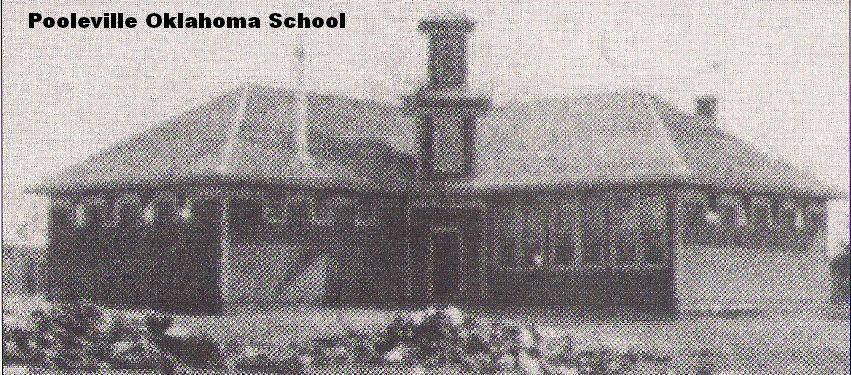
As early as 1886 the frontier village of Elk (post office opened January 15, 1890), Indian Territory had a school, a one-room building with a flat top. The only teacher was a Professor Kemper. At statehood the village and the school became Pooleville on July 20, 1907. Three possible names were chosen and sent to Washington, DC: JJ Eaves, a prominent rancher, L.O. Majors, the owner of the General Store, and Elzy R. Poole, a pioneer rancher. After a time, Washington DC notified them that Elk, Oklahoma would now be called Pooleville. E.S. Poole was actually Edward Poole and was the son of Elzy R. Poole.
As more settlers arrived, Jim and Edna Eaves, local pioneers, donated some of their ranch land for a new school. The building was erected north of the Pooleville church. In 1914 Walter Camp served as the Principal and Lillian Dotson was the teacher. For the 1920 to 1921 school term, five teachers were hired including Mrs Mamie Brady, the Eave’s daughter.
By 1923 enrollment had dropped and only three teachers were needed, but because of parents’ interest and encouragement, Pooleville became the center school for district 48. Through the years the Eaves’ family continued their support of the school and their granddaughters, Jimy Earlene Brady (Rose) attended kindergarten at Pooleville.
Last of the one teacher schools was abolished in 1956 when the Pooleville school was annexed to Fox (district 74), one of the largest consolidated schools in the county.
On June 8, 1894, a sheriff’s posse from Anadarko caught and killed William M. “Bill” Dalton (a brother of the Daltons and member of the Doolin-Dalton Gang) near Pooleville. Location of Bill Dalton’s death SW of Pooleville
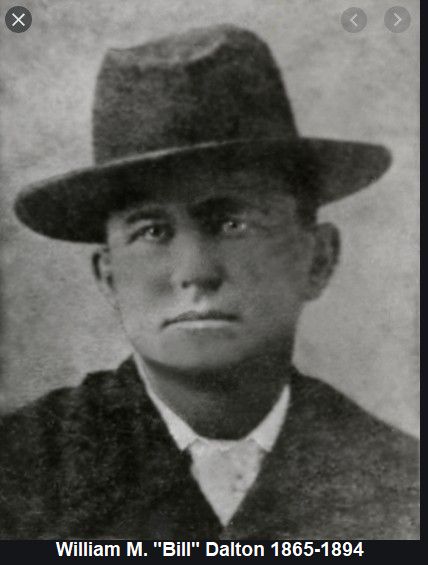
Saturday Sept 30th – Quilt Show At Wilson, Oklahoma
The Wilson Historical Society is having their second annual quilt show September 30th during their Fall Festival 10:00am to 4:00pm. if anyone would like to enter a quilt (old or new) drop it off at the museum Fridays and Saturdays 10:00 a.m. to 4:00 p.m. We are also taking chances on a quilt at $1 a chance. They can be purchased at the museum or at the bank in Wilson. Winner will be announced September 30th. Winner need not be present to win. By the way, quilt show is free. We had about 30 quilts last year and have made room for more this year. -Mindy Taylor
https://www.wilsonhistoricalmuseum.org/
I was at Ardmore’s Rosehill Cemetery this week looking for a relative on the Bridges side of my family from way back. I finally found her, but her name was changed from Bridges to Smith after her husband, Robert Williams Bridges, was shot to death at Frost, Texas after her brother jumped in to protect her from her soon to be ex-Husband, Robert Bridges. Anyway. after finding the grave of Drewsey Bridges Smith, as I walked away, next to Drewsey’s I saw a baby’s grave marker broken off from it’s base and laying facedown. I lifted it up and it was for a 2 year old, Lloyd Bridges, who is also kin to me from way back. Soon I’ll get back to the cemetery, clean up the marker, and re-attached it to it’s base using Liquid Nails.
https://www.findagrave.com/memorial/68646384/drewsey-e-smith
Below is a link to the 2 year old boy, Lloyd Bridges’ on Find-A-Grave. The picture was taken before the marker was knocked over. I see the head of the lamb on his maker was broken off, even when this picture was taken.
https://www.findagrave.com/memorial/16228626/lloyd-truman-bridges
The inscription at the bottom of the marker reads:
How much of hope,
How much of joy,
Is buried with our darling boy
Q. Butch, Do you know anything about milk cans? I’m sure this one says Colverts Ardmore 50. -Arzella Jones
A. I’m no expert, that’s for sure. But Colvert’s started in Ardmore in 1918 selling ice cream. They didn’t get in the milk business untili 1928. So the can could date back to 1928.
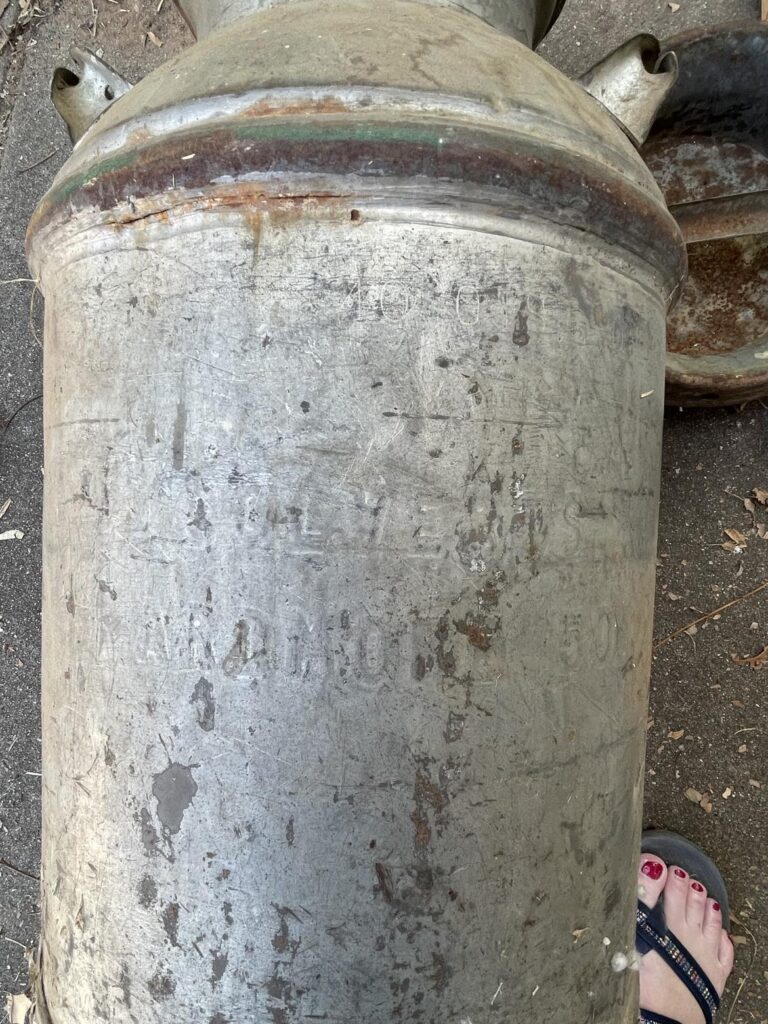
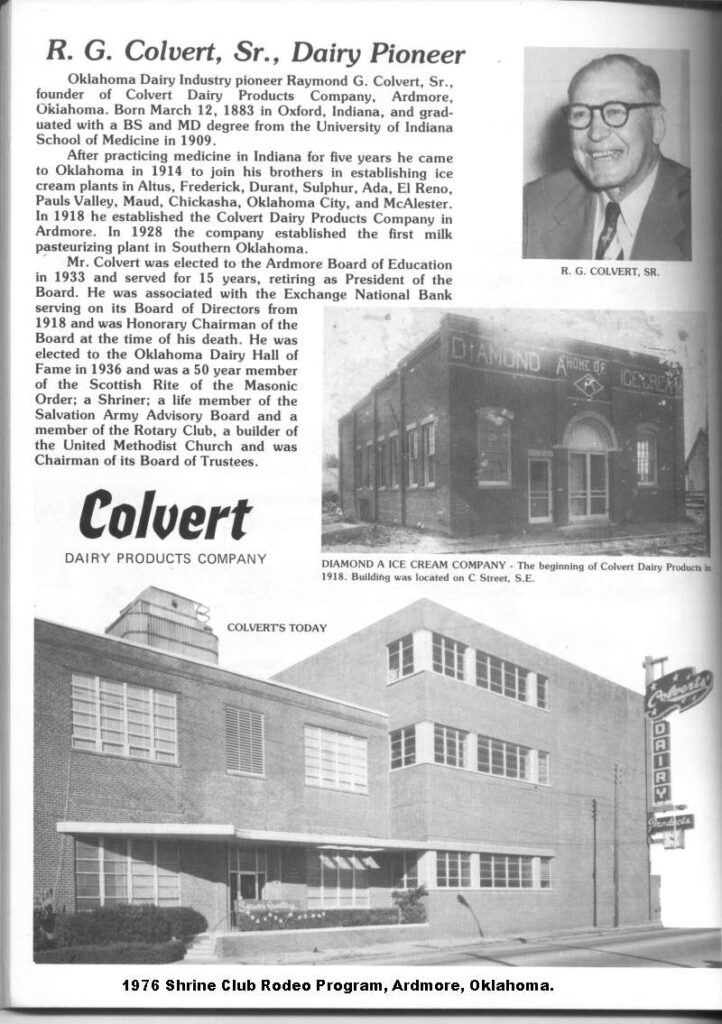
The Mailbag
In the twenty-three years since you wrote about your Amtrak trip in 2000, you’ve probably learned that Justin, Texas, has no connection to the Justin Boot company. Actually, the origin of Justin Boots lies a lot closer to Ardmore than you might think.
J. R. Justin began making and selling custom boots to cowboys in 1879 in Spanish Fort, Texas, about twenty-four miles southwest of Ardmore (as the proverbial crow flies) and about fifty miles away by road. In 1889, Justin moved twenty miles south to Nocona and set up a boot factory there.
By 1925, “Daddy Joe” Justin was dead, and the company — by then known as J. R. Justin & Sons — was one of the largest bootmakers in Texas. The Justin sons were majority shareholders and relocated the company to Fort Worth to benefit from a larger labor market and better rail connections.
And that’s where the drama begins.
Enid Justin was the oldest daughter of “Daddy Joe” and definitely a daddy’s girl, but she had no say in how the family business was run. She was hotter than a boiling pot of collards that her brothers would abandon Nocona, the town that had been home to the business for thirty-five years. Enid declared war on her brothers and the Justin Boot Company.
Scooping up some of the old employees and obsolete equipment her brothers left behind, Enid opened the Nocona Boot Company. With her as chief designer, sales manager, manufacturing foreman, and company president, Nocona Boot Company thrived, even as the Depression years dragged on. But Enid’s company earned a national reputation in 1939 when she sponsored an event that came to be known as “The World’s Longest Horse Race.”
Enid Justin and the Nocona Boot Company put up a $750 purse for the first rider to depart Nocona, Texas, on horseback, ride cross-country, and arrive in San Francisco at the Golden Gate International Exposition. A thousand people lined the streets of Nocona on March 1, 1939, to watch fifteen cowboys (and one cowgirl) gallop across the starting line.
Ride-along monitors made sure no rider cheated, and reporters sent news of the daily standings back to the wire services and their newspapers. Readers across the country watched the results, picked their favorite riders, and often drove dozens of miles to see the contenders pass. By the time the riders reached California, it was often necessary for police or firefighters to clear the route of spectators.
The winner crossed the finish line in Oakland on March 24, greeted by ten thousand cheering spectators and Enid Justin with a cowboy hat filled with 750 mint-fresh silver dollars.
For your readers who want to know more about “The World’s Longest Horse Race,” I tell the story in a chapter of my recent book: Texas Loud, Proud and Brash: How Ten Mavericks Created the Twentieth-Century Lone Star State. https://rowman.com/ISBN/9781493064397/Texas-Loud-Proud-and-Brash-How-Ten-Mavericks-Created-the-Twentieth-Century-Lone-Star-State.
(In the book, I explain how Texans earned the reputation for being braggy, boastful, high-handed, sports-crazy, fashion-focused, loud, self-promotional, and too darn annoying for words.)
Thanks, Butch, for letting me share this little fact-correction and plug my book. But, most of all, thanks for the every-week-without-fail newsletter filled with stories about life (and history) in Carter County, OK. -Rusty Williams
https://rustywilliamsauthor.com/
In 1913, the US Postal Service introduced parcel post service. Customers took advantage of the new expanded regulations to mail things like eggs, live bees, harmless live animals, produce, and even an entire building, one brick at a time. The most unusual deliveries occurred between 1910 and 1920, as numerous customers mailed children via parcel post. In 1920, this practice was officially banned (though we found a few instances where it occurred after this date). We’ve combed our archives to find special deliveries that made the news.
Shortly after parcel post was introduced, parents in rural Ohio sent their baby boy with the mail carrier to visit nearby relatives. -Jenny Ashcraft
Both of my older brothers remember that little store at the end of
Stanley. We grew up on Stanley Street U.S.A. and traveled the length
of Stanley on our bicycles quite frequently. Both brothers remember
peddling down to the Ezy Way to get our dad beer. YES, back in the
day a young lad could jump on his bicycle and go fetch beer for his
father ! What a deal ! I can remember doing the same by fetching
pappy cigarettes. On one such trip I was hit by a city truck, and
still remember sailing through the air after being knocked off my
bike. My buddies and I would frequently bicycle down Stanley to the
rail-yard and watch the workers at the ice plant load blocks of ice
into rail-cars. -Steve Miller
Officer John Randolph was a wonderful friend. He will be missed by many.
https://www.kxii.com/2023/09/28/ringling-mourns-loss-police-officer-on-duty-accident/
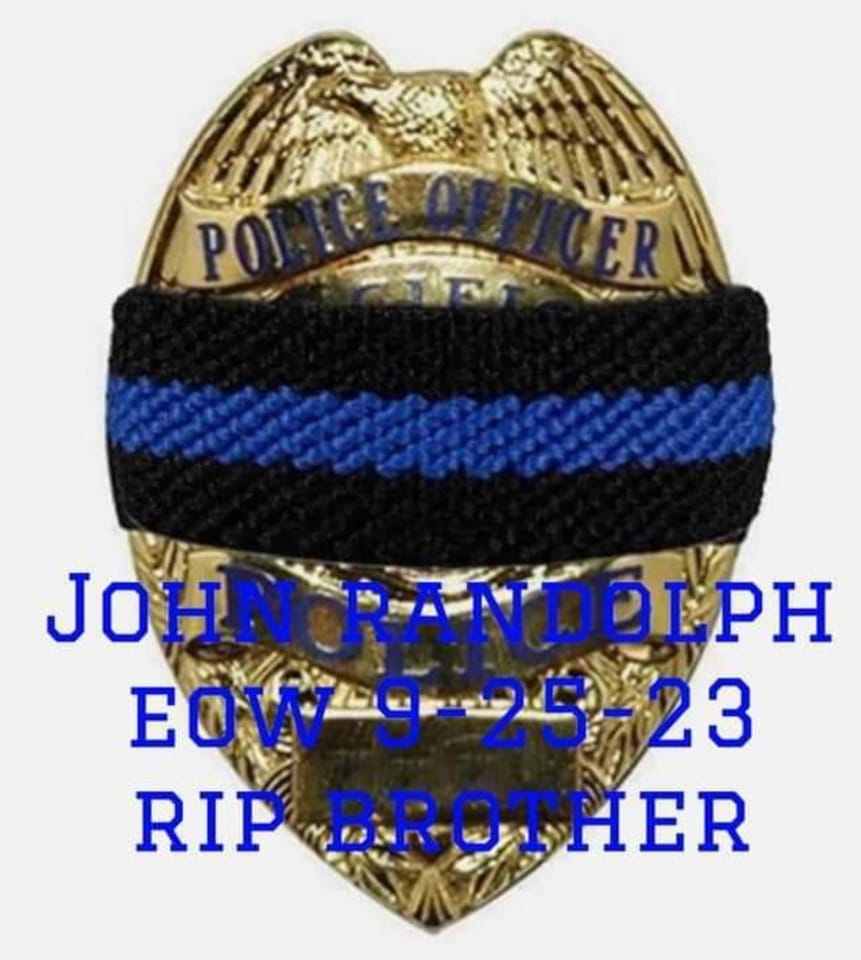
HAM Radio Talk KC5JVT via EchoLink
Still pretty slow in my HAM world. I did chat with a couple new HAMs this week.
277. 09/25/23 7:45pm KC3WSO Ken in Ellicott City, MD
https://www.qrz.com/db/KC3WSO
278. 09/25/23 8:20pm N2KFA Pete in Alexander, VA
https://www.qrz.com/db/N2KFA
Below is from my Vol 4 Issue 180 September 30, 2000 newsletter:
This week I think we had a flashback to the old movie “The Birds” by Alfred Hitchcock around the courthouse. In the early mornings there were birds everywhere. But what really was amazing, it seemed like thousands of birds were in the two trees across the street at the Salvation Army building. I mean these little devils made a noise like you wouldn’t believe…. LOUD.
A couple of weeks ago I mentioned the unbelievable sheriffs race here in Carter county, and how close the primary vote was, one vote forcing then present sheriff, Don Waters, into a runoff with Harvey Burkhart. In the runoff election, Harvey won and will take the reins of the county’s law enforcement machine January 1, 2001. The reason I am mentioning this, is I heard on the news this week the sheriff in LeFlore county, Oklahoma Kendall Ballew, lost by one vote. He called for a re-count and the recount placed him ahead by one vote. So he got to keep his office. Unusual things are happening more and more it seems.
Note: I would bet Kendall Ballew is some kin to Ardmore’s infamous deputy sheriff, Bud Ballew.
Speaking of law enforcement, Oklahoma was the first state in the Union to make available to state law enforcement agencies the Oklahoma Department of Corrections database on its inmates about 10 years ago. Now the Department of Corrections has taken another giant step forward. They have placed on the Internet this same searchable database. This is a database of convicted felons from all 77 counties dating back 20 or 25 years. We are talking about several hundred thousands inmates. You can check out Oklahoma’s felon database at the following URL: https://okoffender.doc.ok.gov/
“Counter checks were laying around in retail stores, too. Usually from several of the local banks, but no one had any hesitation in crossing out the bank name and filling in theirs if a counter check from their bank wasn’t available. Some banks also provided checks to stores with their name imprinted on them but a separate place to write in your bank’s name and location. Some stores also provided similar checks with a blank space for the bank, with the store name already printed.”
“Your account of the train ride to Ft. Worth brought back old memories again. I must have been about 11 or 12 and was in the Girl Scouts. A couple of my friends Nancy and Patsy Veal need uniforms and their grandmother said we should go to Ft. Worth to Singers (dept. store). He husband Mr. Jones worked for the railroad and got us passes so on Saturday we got up early and went to the RR Depot and boarded the train. Now that was over 50 years ago so that train was not like the ones we have now. But for 3 girls who went for a train ride for the first time it was very special. Grandma took us a lunch and we had hard boiled eggs (which I never liked just to eat) It took us about 4 hours because we got there shortly after noon. We did our shopping and made the trip back home. I still think about that time.” -Jo Evelyn Franklin Barton
“Though we travel the world over to find the beautiful, we must carry it with us or we find it not.” -Ralph Waldo Emerson
See everyone next week!
Butch and Jill Bridges
Ardmore, OK
580-490-6823
